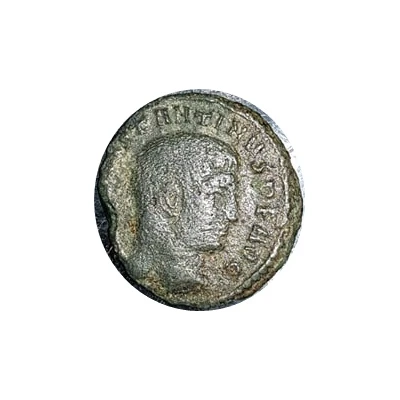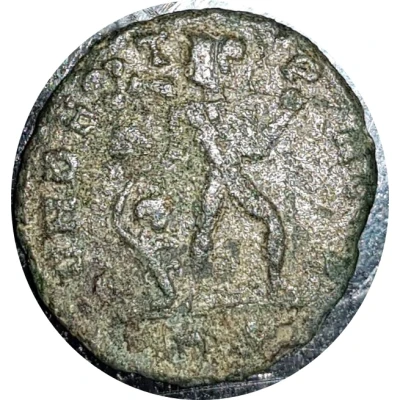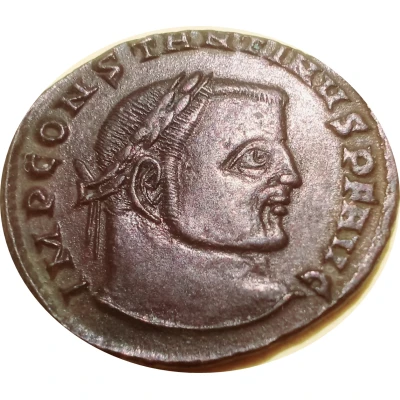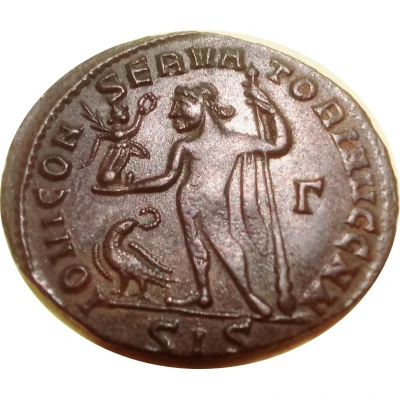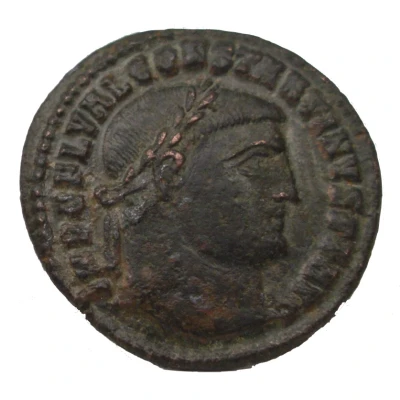
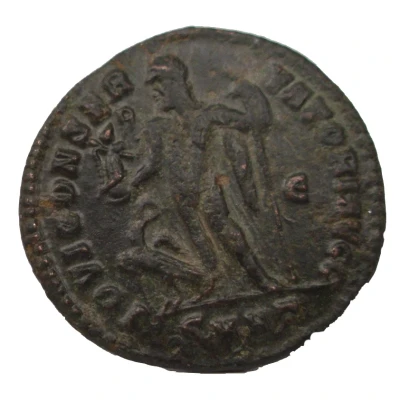

Nummus - Constantinus I IOVI CONSERVATORI AVGG; Heraclea
313 year| Bronze | 3.55 g | 22.28 mm |
| Issuer | Rome › Roman Empire (27 BC - 395 AD) |
|---|---|
| Emperor | Licinius I (308-324) |
| Type | Standard circulation coin |
| Year | 313 |
| Value | Nummus (1⁄7200) |
| Currency | Solidus, Reform of Constantine (AD 310/324 – 395) |
| Composition | Bronze |
| Weight | 3.55 g |
| Diameter | 22.28 mm |
| Thickness | 2 mm |
| Shape | Round (irregular) |
| Technique | Hammered |
| Orientation | Coin alignment ↑↓ |
| Demonetized | Yes |
| Updated | 2024-10-05 |
| Numista | N#116854 |
|---|---|
| Rarity index | 78% |
Reverse
Jupiter, chlamys draped over left shoulder, standing front, head left, holding Victory on globe in right hand and leaning on sceptre with left hand; at feet to left, eagle holding wreath in beak.
Officina letter in left or right field.
Mintmark in exergue.
Script: Latin
Lettering:
IOVI CONS-ERVATORI AVGG or
IOVI CONSER-VATORI AVGG
Unabridged legend: Jovi Consevatori Augustorum.
Translation: To Jupiter, preserver of the emperors.
Edge
Rough
Interesting fact
The Nummus - Constantinus I (IOVI CONSERVATORI AVGG; Heraclea) (313) coin was part of a large-scale currency reform implemented by Emperor Constantine the Great in 313 AD, which introduced a new standardized system of coinage across the Roman Empire. This coin, made of bronze and weighing 3.55g, was one of the smallest denominations in the new system and was used for everyday transactions. Its design featured the image of the Roman god Jupiter on one side and the emperor's name and title on the other. The coin's minting process and design were overseen by the Roman imperial authorities, ensuring its quality and authenticity. Despite its small size, the Nummus - Constantinus I (IOVI CONSERVATORI AVGG; Heraclea) (313) coin played an important role in facilitating trade and commerce across the vast Roman Empire.
